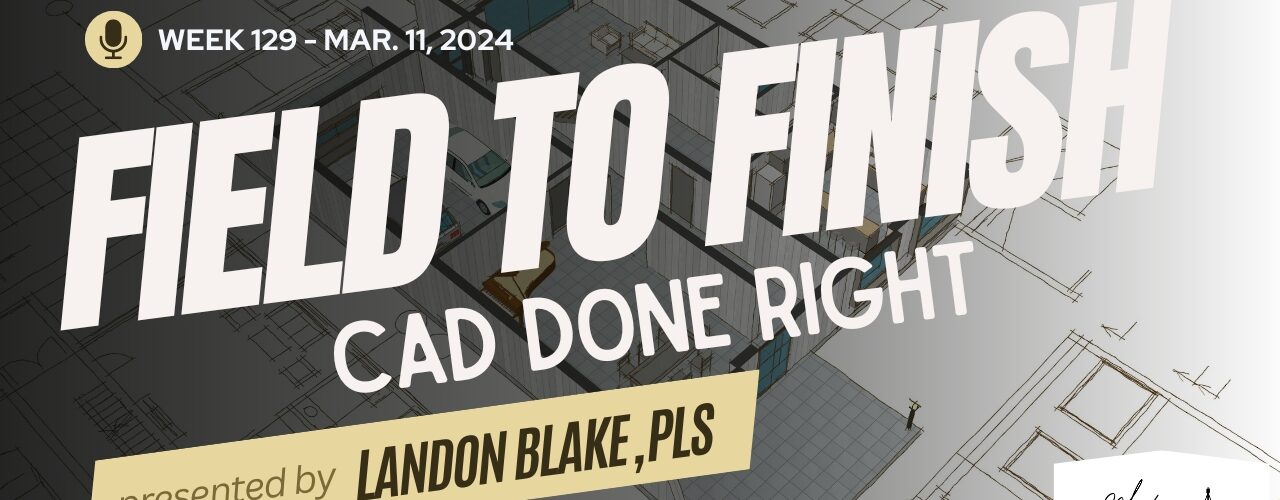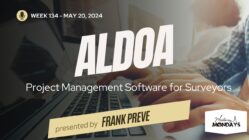Join us for this week’s presentation: Field to Finish, CAD Done Right — presented by Landon Blake, PLS
Be sure to watch these two videos before or after viewing this session!
Zoom AI Summary:
| Field to Finish Implementation Challenges | |
| Landon discussed the potential challenges of implementing field to finish, particularly for large companies and those not familiar with the system. He suggested a gradual introduction, starting with favorites, to avoid productivity loss due to learning curves. Landon emphasized the importance of ensuring all involved parties are proficient in using the system to avoid further delays. He also highlighted the significance of accurate line work in utility mapping projects and the role of the party chief in ensuring this. Landon shared an experience where poorly executed line work led to inefficiencies and safety hazards. Finally, Landon discussed a recent hire who initially seemed a good fit but struggled with tasks such as CAD work and paperwork, indicating a need for further discussion about the employee’s career aspirations. | |
| Transitioning to CAD Software: Challenges and Solutions | |
| The team discussed their work process, particularly the transition from manual surveying to using software such as Civil 3D and Trimble. Rob emphasized the importance of coding and its impact on the workflow, while also noting the initial resistance from field workers. The challenges of working with large sites and the benefits of line work in CAD software were also discussed. Landon suggested setting up a feature code library for both CAD software and raw data processing software to allow teams to see their line work in the data collector. He also highlighted the importance of cross-training office and field staff. Trent mentioned some issues with curves causing messy line work, which Landon promised to address. | |
| Circular Arc Limitations and 3D Design Software Functionalities | |
| Landon proposed a method to overcome the limitations of supporting a circular arc in 2D, suggesting breaking up large curves into smaller ones to create a compound curve. He also discussed the use of a segmented arc in the service model and the automatic interpolation of curves by the software. Landon agreed with Joshua’s suggestion of using fuel as a sanity check and offered to demonstrate the process in Carlson. He also explained the setup and use of a feature code library for field to finish codes, highlighting its benefits for clients like utility companies. Landon also mentioned the potential for supporting more than one feature code library and confirmed that their team could share their code library. He further discussed the functionalities of a 3D design software, emphasizing its layering and hatching capabilities, and recommended starting with basic codes and gradually progressing to more complex ones. Lastly, Landon mentioned the availability of a learning library for Carlson customers. | |
| CAD Software Process Value and Trimble Transition | |
| Landon emphasized the value of a certain process related to CAD software and urged his team to delve deeper into it. He shared instructional videos on the topic and agreed to Trent’s suggestion of adding these to the mentoring site. They also shared their experiences attending a recent conference, and Landon highlighted the benefits of using Trimble’s GIS Feature Code Library over Carlson Field to Finish for attribute data collection. The team also discussed their transition to using Trimble software and the potential need to adapt to a client’s GIS demands. | |







